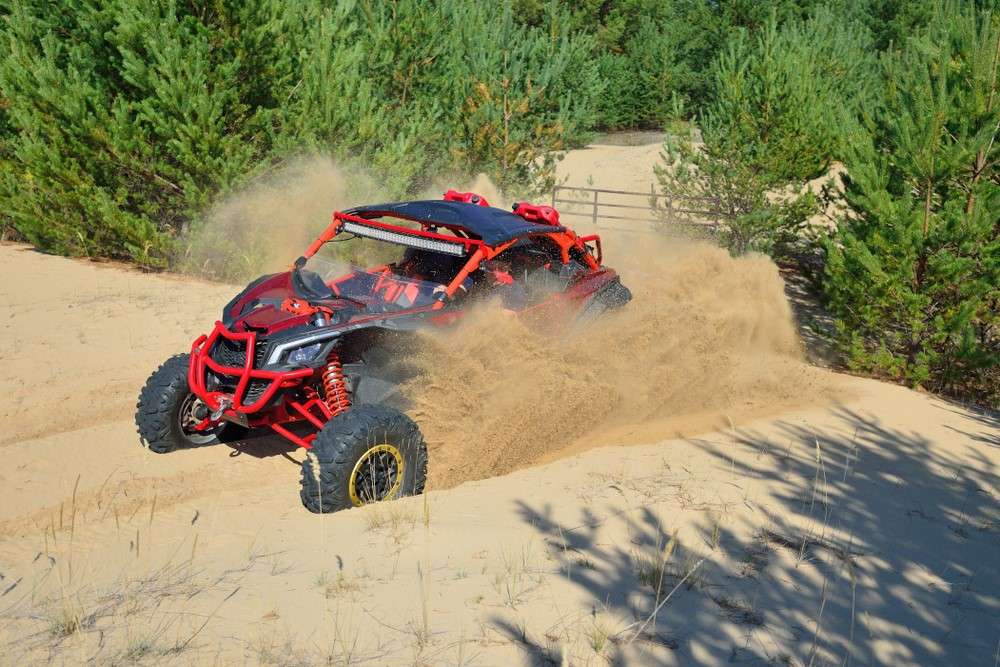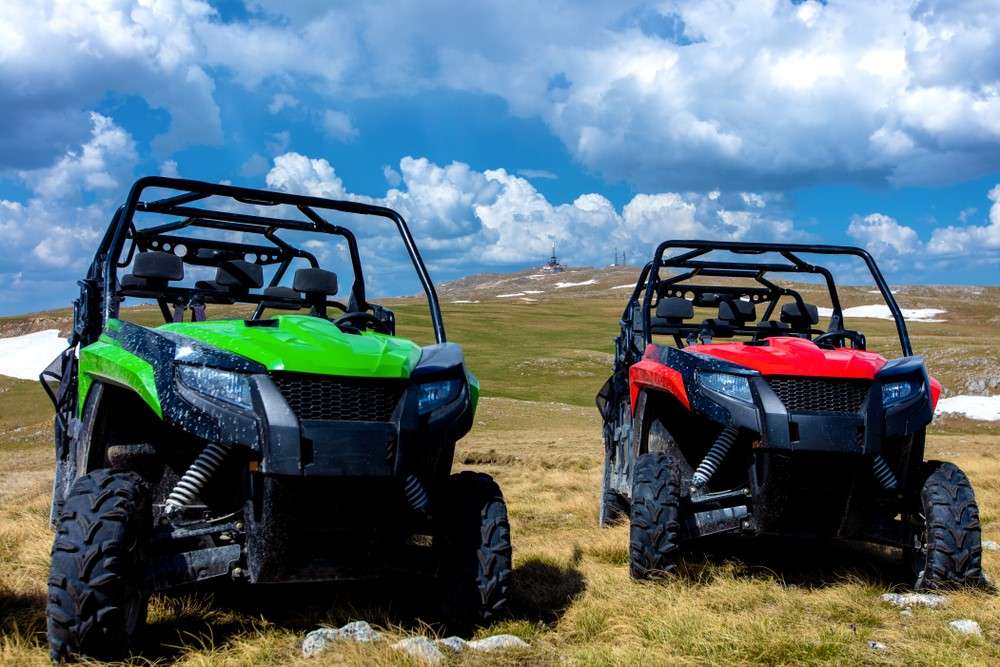Riding a UTV is an exhilarating experience unlike any other. With an expanding global industry valued at over $4.54 billion, all-terrain vehicles take you deeper into the natural world than you’ll ever get on foot. Adored by nature lovers and speed racers alike, ATVs, UTVs, quads and side-by-sides are your ticket to the ultimate off-road adventure.
However, unlike other modes of off-road transportation, UTVs can seat up to four to six passengers, so you and your friends or family can enjoy each other’s company along the way. They keep everyone together and are perfect for taking group expeditions, private safaris, nature tours and scenic stopovers on camping trips. If you want everyone to have their own vehicle, learn about the differences between a UTV vs. an ATV.
Whether renting or buying a UTV, you don’t need a lot of experience to captain your crew through the wilderness, but driving off-road will throw more curveballs your way. Here are eight mistakes to avoid when UTV riding:
Table of Contents
Mistake #1: Not Wearing Protective Gear
Riding over bumpy, uneven ground can increase your risk of injury. Intense vibrations can lead to head bumps, and sharp turns can flip the vehicle. You and your passengers should wear helmets in case of turbulence or a fall. UTVs lack the safety components of motor vehicles. Wearing a helmet is the off-road version of wearing a seat belt.
Mistake #2: Using Hand Signals
Communicating with other riders keeps your group together. The people in the back can navigate the map while you focus on bucking obstacles, but taking your hands off the handlebars to signal reduces response times. Pair your helmets with Bluetooth off-road headsets to talk to other drivers or passengers hands-free. They connect automatically when in range, so you don’t have to reset the device manually. You can use it to narrate your adventure and ensure everyone is headed to the same destination.
Mistake #3: Riding on the Street
UTVs aren’t designed to drive on public roads. They need turn signals, safety provisions and other features to obey traffic laws. Driving an unlicensed off-road vehicle on public roads will incur a steep fine. Keep your all-terrain ride in the dirt where it belongs to avoid getting in trouble with the law.

Source: Anton Tolmachov/Shutterstock.com
Mistake #4: Riding Off Trail
ATV and UTV parks have clearly marked trails to prevent riders from venturing into hazardous or protected areas. Deviating from the path can wreak havoc on local ecosystems, endangering wildlife and flora. You’ll also encounter more obstacles and impasses that can leave you stranded. Bring a paper map and compass and stick to the designated course to leave the environment as you found it.
Mistake #5: Riding with More Than the Allotted Number of Passengers
UTVs can hold two to six passengers. Overloading the vehicle will damage it and overheat the engine. The extra weight will also cause it to sink in the sand, dirt or mud, increasing your risk of getting stuck. Check the manufacturer’s guidelines to see how much weight the UTV can support. Bring more than one vehicle to transport larger groups.
Mistake #6: Braking When Driving Uphill or Through Obstacles
Novices are much more likely to lose traction in slippery situations than experienced riders because they wade too deep into the mud. The best way to avoid getting stuck is to steer around potential pitfalls. If you need to drive through a rough patch or uphill, keep moving and forge a path of least resistance. Braking will sap your momentum, which could cause your tires to spin out.
Driving off-road means knowing your limits. Tackling steep hills, aggressive rock formations and flooded valleys can put your entire crew at risk. Err on the side of caution to help everyone enjoy the trip.
Mistake #7: Not Bringing a Winch or Tow Kit
If you’re driving after a rainstorm or don’t know what to expect from the trail, bring a winch if you’re riding solo or a tow kit when driving multiple vehicles to get out of a sticky situation quickly.
Mistake #8: Not Maintaining Your UTV
Driving a poorly maintained UTV can be just as dangerous as riding blindfolded. UTVs need regular oil, coolant and transmission fluid changes, as well as brake, tire and suspension inspections. The more aggressive the terrain or riding style, the more the vehicle needs to be maintained.
Once they reach the 10,000-mile mark, off-road vehicles are considered high mileage. Afterward, their performance drops precipitously without frequent repairs. Nothing stings worse than abandoning your UTV because of a mechanical issue. A winch or tow kit won’t be enough to get it home. The professionals will need to drive a pick-up truck to come collect it.
Clean off the vehicle after every ride to prevent mud and dirt from turning into rust, and store the UTV indoors when it’s not in use. Test older models before taking off into the woods to ensure they’re up to the challenge.

Source: FS Stock/Shutterstock.com
UTVs are helping millions of people get closer to nature, but they come with steep learning curves that can throw some adventurers for a loop. Avoid these crucial mistakes to make the most of your first voyage into the unknown.
from Auto Blog | Latest Car News and Reviews, Bikes and Motorcycles https://ift.tt/dX60R7q
No comments:
Post a Comment